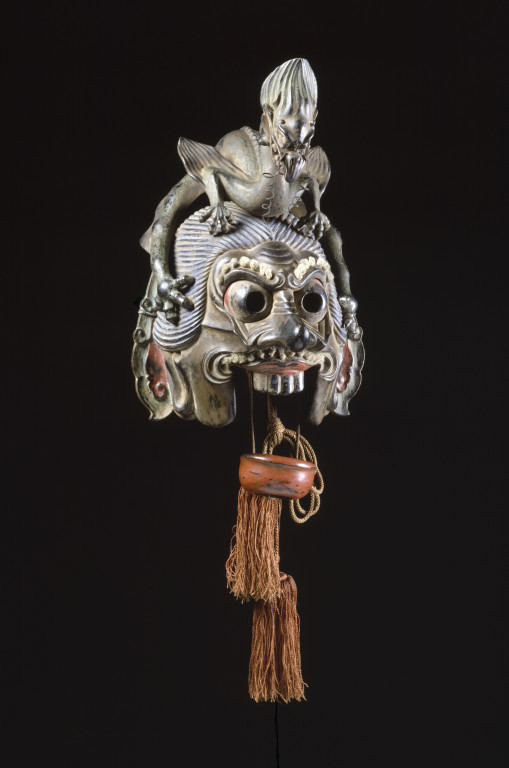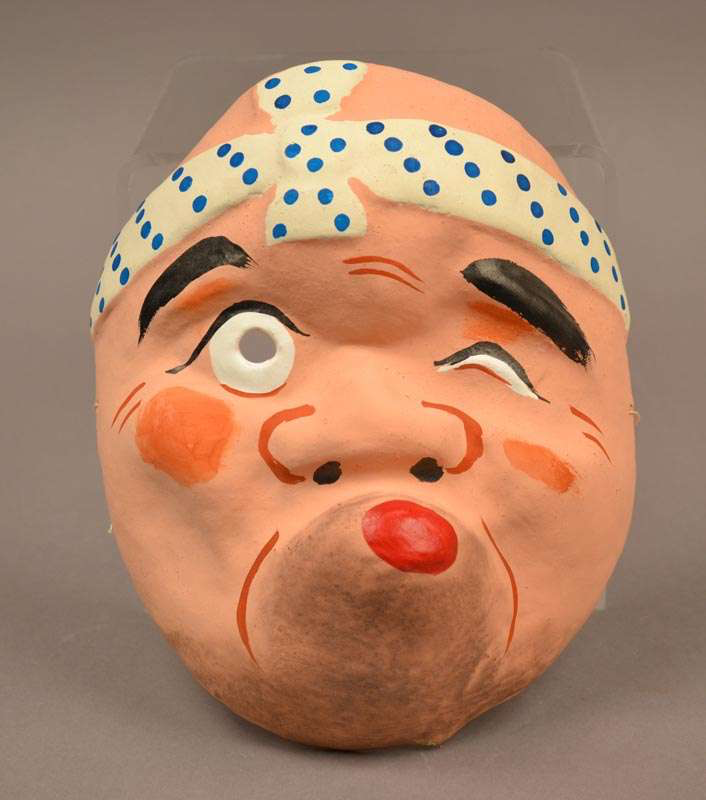As I will be implementing augmented reality within my project I need to use a basis for the augmented reality to recognise in order to bring the characters into the scene. I will use masks based on the characters as the image base for the AR. Before I go into creating the masks I wanted to look into how masks are used for storytelling specifically. I have previously looked into masks briefly but want to research this further specifically within Japan. Below are a few examples of various masks that were used in Japan mainly for dance and classical theatre.
Historical
GIGAKU MASKS
Masks were traditionally used for classical performances which in itself allowed male actors to play both female and male roles. Gigaku masks, stylised wooden mask used by participants in gigaku ( a type of Japanese dance performance ). Gigaku masks are the first known masks used in Japan and are among the world oldest extant masks. ( Ray, 2009).
Early recordings state that these masks were introduced during the 20th year reign of Empress Suiko by a Korean musician Mimashi who imported gigaku plays into Japan from China in 612 (Ray, 2009).

As plays were usually performed outdoors at a court or temple, the features of the masks were carved in an exaggerated manner so they would retain their comic effect when viewed at a distance.
Gigaku masks covered the entire head and were carved by Buddhist sculptors and they included the typical style and technique of contemporary Buddhist sculpture.
It was greatly used during the Nara Period (710 – 784) but was no longer practised by the middle of the Heian Period (990) when it was superset by the bugaku mask.
Bugaku Masks
Bugaku court dances imported from Korea were adopted by the court and replaced Gigaku as official court entertainment.
Bugaku masks were used in traditional Japanese dance that has been performed in the Japanese imperial court for over twelve hundred years. Bugaku was developed from Gigaku masks, however, the masks differ as it would include moveable parts such as the Jaw. Kugaku dancers would traditionally wear intricate traditional Buddhist costumes and the masks would also mimic this (Brandon, 2009).

Gyodo Mask
Gyodo is a Japanese Buddhist ceremony and the term refers to three distinct ceremonies. Masks were used to represent Buddhist figures and used in these ceremonies. (Nishikawa and Bethe, 1978)

Noh Masks
Noh is a type of traditional Japanese musical drama that has been performed since the fourteenth century. Carved from blocks of Japan cypress ( a plant native to Japan ) and painted with natural pigments on a base of glue and crunched seashell. Noh masks signify the characters gender, age and social ranking. (Rath, 2006)

Modern
Masks were an essential part of storytelling within musical performances and unfortunately have been replaced face painting call Kabuki. However, they are now used mainly for decoration but are still worn during certain Shinto dancers and by actors performing a role on stage. Below are examples from The Culture Trip of various masks used to portray beings and creatures within Shintoism. (Joy, 2017)
Oni
Oni are demons. They are usually depicted as red-faced and angry with long sharp teeth, but these creatures aren’t the most frightening of Japan’s monsters. Oni masks are most common during the Bean-Throwing Festival, also known as Setsubun, when people wear them for festival performances at shrines. Parents will even wear them at home to frighten their children, while the kids throw beans to scare the “oni” away and invite good luck into the house for the year.

Tengu
Tengu are the fearsome demi-gods who protect the mountains. These demon-like creatures are depicted with red faces and angry expressions. But their most obvious feature is a long, red nose. In the past, tengu were more birdlike. As they became human, that beak turned into a nose but kept its long shape. Tengu masks are used for Noh stage plays and certain Shinto festivals. They’re also often used as a decoration since the tengu are thought to frighten bad spirits and bring good luck.

Kitsune
Kitsune masks or fox masks are worn by participants in certain Shinto festivals or by attendees just for fun. Historically, foxes were viewed as magical creatures with the ability to shapeshift. They were also seen as messengers of Inari, the Shinto god of rice, commerce, and prosperity. As a result, they are important figures in some festivals involving this god.

Hyottoko
Hyottoko is a silly, childlike figure with a comical expression on his face. His mouth is almost always rounded and skewed to one side, as the stories about him usually involve him blowing on a bamboo pipe. In some traditional Japanese dances during festivals, dancers perform the role of the clown while wearing Hyottoko masks.

Okame
Okame is like the female version of Hyottoko, and their masks usually appear together. They can be worn by dancers to perform amusing, silly dance steps. Like her male counterpart, Okame is a positive figure and sometimes thought to bring good luck. She is portrayed as a woman with a large, oval-shaped head and smiling eyes. She is also known as otafuku.

